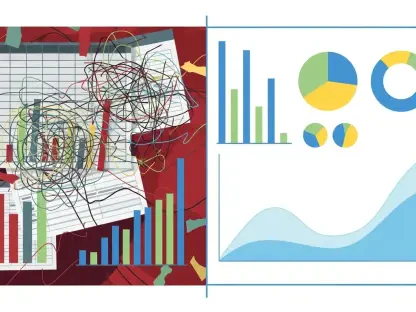The global fumed silica market is on the brink of significant expansion, with projections indicating a rise from USD 1.56 billion in 2024 to USD 2.57 billion by 2034. This impressive growth trajectory is driven by a compound annual growth rate (CAGR) of 5.13% over the forecast period. Fumed silica, known for its unique properties, is increasingly being utilized as an additive in various industrial applications. The rising demand for high-performance materials across industries such as marine, transportation, and pharmaceuticals is a key factor propelling this market forward.
Market Dynamics and Growth Drivers
Increasing Demand in Marine and Transportation Industries
The marine and transportation industries are experiencing a surge in demand for high-performance parts, which significantly drives the fumed silica market. With properties like its ability to enhance durability and overall performance, fumed silica is an ideal additive for these sectors. As industries seek materials that can withstand harsh environmental conditions and improve the longevity of their components, manufacturers are increasingly turning to fumed silica.
Fumed silica’s attributes, such as its lightweight nature and high surface area, make it particularly valuable. This demand is further fueled by its utility in creating advanced composites that improve fuel efficiency and reduce emissions. These factors collectively contribute to its growing adoption by marine and transportation sectors focusing on innovation and sustainability.
Technological Advancements and Coating Applications
Technological advancements are playing a crucial role in the development of the fumed silica market. Innovations in production processes and the introduction of new applications are expanding the market’s potential. One notable area of growth is in coating applications, where fumed silica is used to improve the properties of paints and coatings. Its ability to provide anti-corrosion, anti-fouling, and self-cleaning properties makes it highly desirable in this segment.
Continual improvements in nanotechnology and the development of more effective methods for incorporating fumed silica have further propelled its demand in coatings. As manufacturers seek to produce more durable and efficient coatings, fumed silica’s role as a reinforcing agent becomes indispensable. Consequently, its adoption in applications beyond traditional uses signals broader market growth and increased market penetration in specialized applications.
Regional Market Analysis
Asia Pacific: The Leading Region
Asia Pacific is set to dominate the fumed silica market, holding the largest market share of 42% in 2024. The region’s extensive use of fumed silica in industries such as adhesives, sealants, paints, and coatings is a major contributing factor. Substantial industrial growth, supported by ongoing research and development (R&D) and product innovation by major market players, further bolsters this dominance.
For instance, Asian Paints’ significant expenditure on a new waterborne paint manufacturing unit in Madhya Pradesh, India, underscores the region’s growth potential. Moreover, the robust manufacturing base and an emphasis on high-quality standards in various Asian countries are enhancing the region’s competitive advantage. This combined with governmental policies fostering industrial expansion lays a solid foundation for sustained growth.
North America: Fastest Growing Region
North America is anticipated to witness the fastest growth during the forecast period. The region’s focus on technological advancement, innovation, and stringent quality criteria is driving market progression. The U.S. plays a leading role in this growth, with rising demand for fumed silica in paints, coatings, adhesives, and sealants. Additionally, the emphasis on high-quality and sustainable solutions is pushing the market forward in North America.
The technological landscape in North America, particularly the adoption of innovative production techniques, is enhancing product quality and performance. This trend is coupled with increased investments in R&D and the development of advanced materials that align with stringent environmental regulations. Together, these dynamics position North America as a pivotal region for fumed silica market expansion.
Product Segmentation and Market Trends
Hydrophobic Fumed Silica: Market Leader
The hydrophobic segment led the market in 2024 due to its superior properties, such as anti-icing/wetting, anti-fouling, anti-corrosion, and self-cleaning. These attributes make hydrophobic fumed silica highly desirable in various industries. Its ability to enhance the performance and durability of products is driving its adoption across multiple sectors.
The role of hydrophobic fumed silica extends to applications requiring enhanced water resistance and surface functionality. Its integration into formulations not only improves the product’s lifecycle but also provides a competitive edge in markets where performance criteria are paramount. The cost-benefit ratio further cements its position as a market leader by meeting diverse industry needs.
Hydrophilic Fumed Silica: Fastest Growing Segment
The hydrophilic segment is expected to exhibit the fastest growth driven by an increasing emphasis on eco-friendly and sustainable solutions. Hydrophilic fumed silica, acting as a thickening agent, rheology modifier, and anti-settling agent, is gaining popularity due to its affordability compared to its hydrophobic counterpart. This shift towards sustainable and cost-effective solutions is propelling the growth of this segment.
Hydrophilic fumed silica’s versatility and compatibility with various formulations make it a sought-after additive in industries targeting green solutions. Industries are increasingly focusing on reducing their environmental footprint without compromising on product performance. This creates significant opportunities for hydrophilic fumed silica, especially in applications where regulatory compliance and sustainability are key.
Applications in Key Industries
Pharmaceutical Industry: Largest Market Share
Fumed silica finds significant application in the pharmaceutical industry, which captured the largest market share in 2024. Its use as a functional excipient in tablet formation, controlled-release matrices, modified-release formulations, and disintegrating tablets is driving this trend. Fumed silica’s ability to improve bioavailability and drug stability makes it a crucial component in pharmaceutical formulations.
The pharmaceutical industry’s stringent quality requirements necessitate advanced materials that can optimize drug efficacy and production efficiency. Fumed silica’s unique properties align well with these needs, making it invaluable for innovative drug delivery systems. Additionally, its role in extending the shelf life of formulations highlights its importance in the pharmaceutical sector’s value chain.
Silicone Elastomers: High Growth Potential
The silicone elastomers segment is poised to grow at the highest CAGR from 2025 to 2034. The rising need for high-performance materials in electronics, automotive, and medical industries is driving this growth. Fumed silica’s mechanical properties play a crucial role in enhancing the performance of silicone elastomers, making it a valuable additive in these applications.
With the continuous evolution of electronics and the automotive industries’ demand for lightweight, high-strength materials, fumed silica’s application in silicone elastomers becomes more pronounced. Its ability to enhance elasticity, thermal stability, and mechanical strength of elastomers positions it as an essential component, catering to the growing trend of high-performance materials in cutting-edge applications.
Impact of Artificial Intelligence
AI in Production Processes
Artificial Intelligence (AI) is emerging as a transformative force in the fumed silica market. AI-driven systems are streamlining production processes, enhancing product consistency, and improving quality control. The optimization of manufacturing operations through AI is reducing costs and making the production of fused silica-based food additives more efficient. This technological advancement is expected to have a significant impact on the market’s growth.
The integration of AI into manufacturing processes allows for real-time monitoring and predictive maintenance, minimizing downtime and increasing operational efficiency. Moreover, AI enhances product development cycles by leveraging data analytics to optimize formulations and drive innovation. These capabilities underscore AI’s potential to significantly bolster the fumed silica market’s production landscape.
Market Challenges and Opportunities
Growth Drivers and Constraints
The global fumed silica market is poised for substantial growth, with forecasts showing an increase from USD 1.56 billion in 2024 to USD 2.57 billion by 2034. This remarkable progression will be driven by a compound annual growth rate (CAGR) of 5.13% over the next decade. Fumed silica, renowned for its distinctive properties, is being increasingly used as an additive across various industrial sectors. The rising demand for high-performance materials in industries such as marine, transportation, and pharmaceuticals plays a vital role in accelerating this market growth.
Fumed silica’s versatility and effectiveness in enhancing product qualities make it an essential component in several applications. In the marine and transportation sectors, it is used to improve the durability and efficiency of materials exposed to harsh conditions. In the pharmaceutical industry, fumed silica acts as a thickening agent, ensuring the consistency and stability of formulations. Its role in these applications underscores its growing importance and market demand.
Furthermore, innovations and research in the field are likely to open new avenues for applications, thereby contributing to its expansive market outlook. As industries continue to seek advanced materials that can meet rigorous performance standards, the demand for fumed silica is expected to sustain its upward momentum, cementing its place in the global market landscape.









